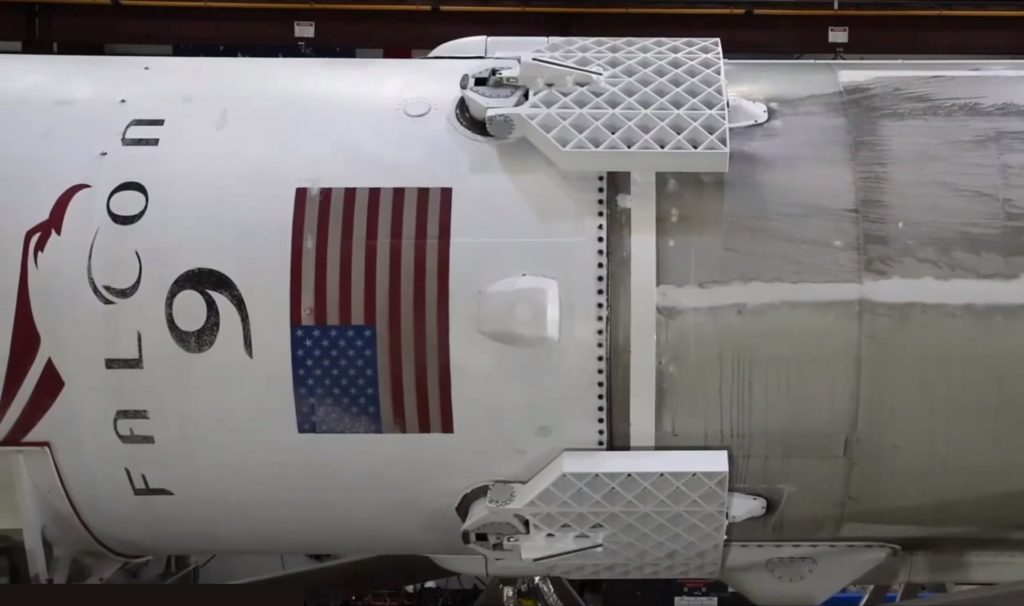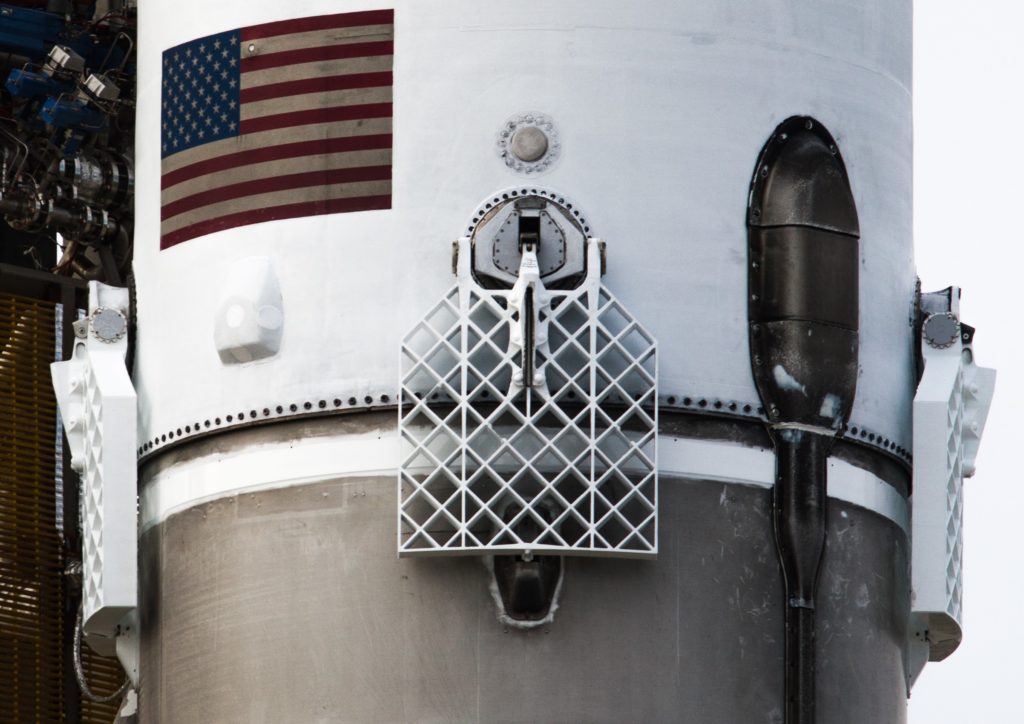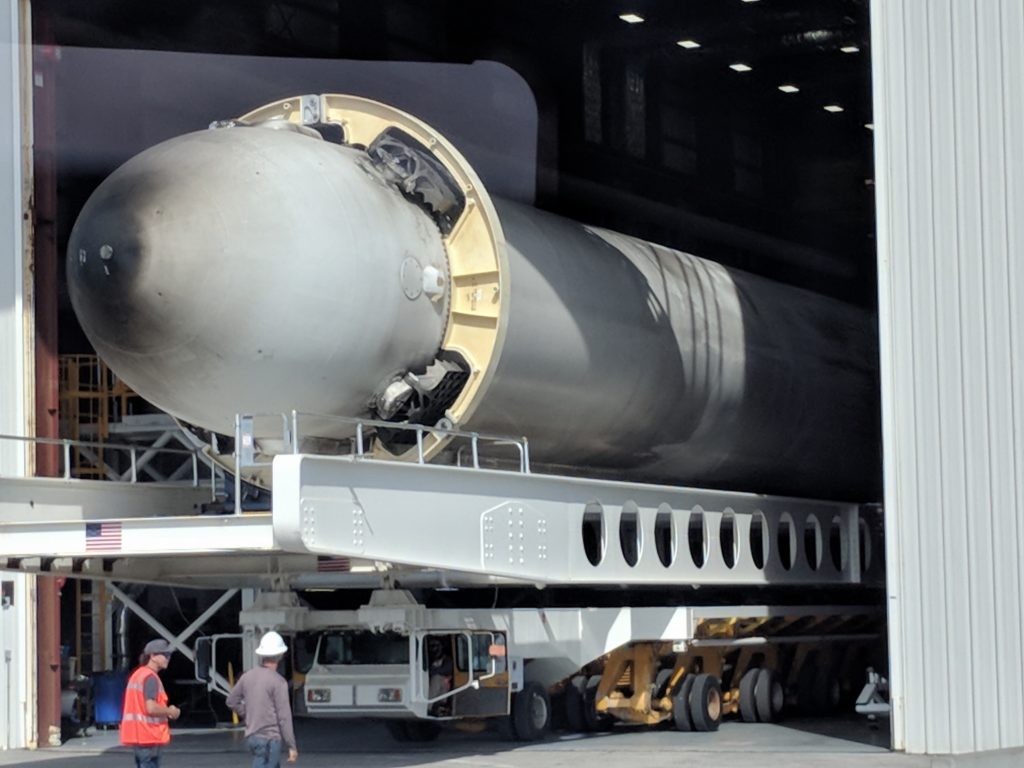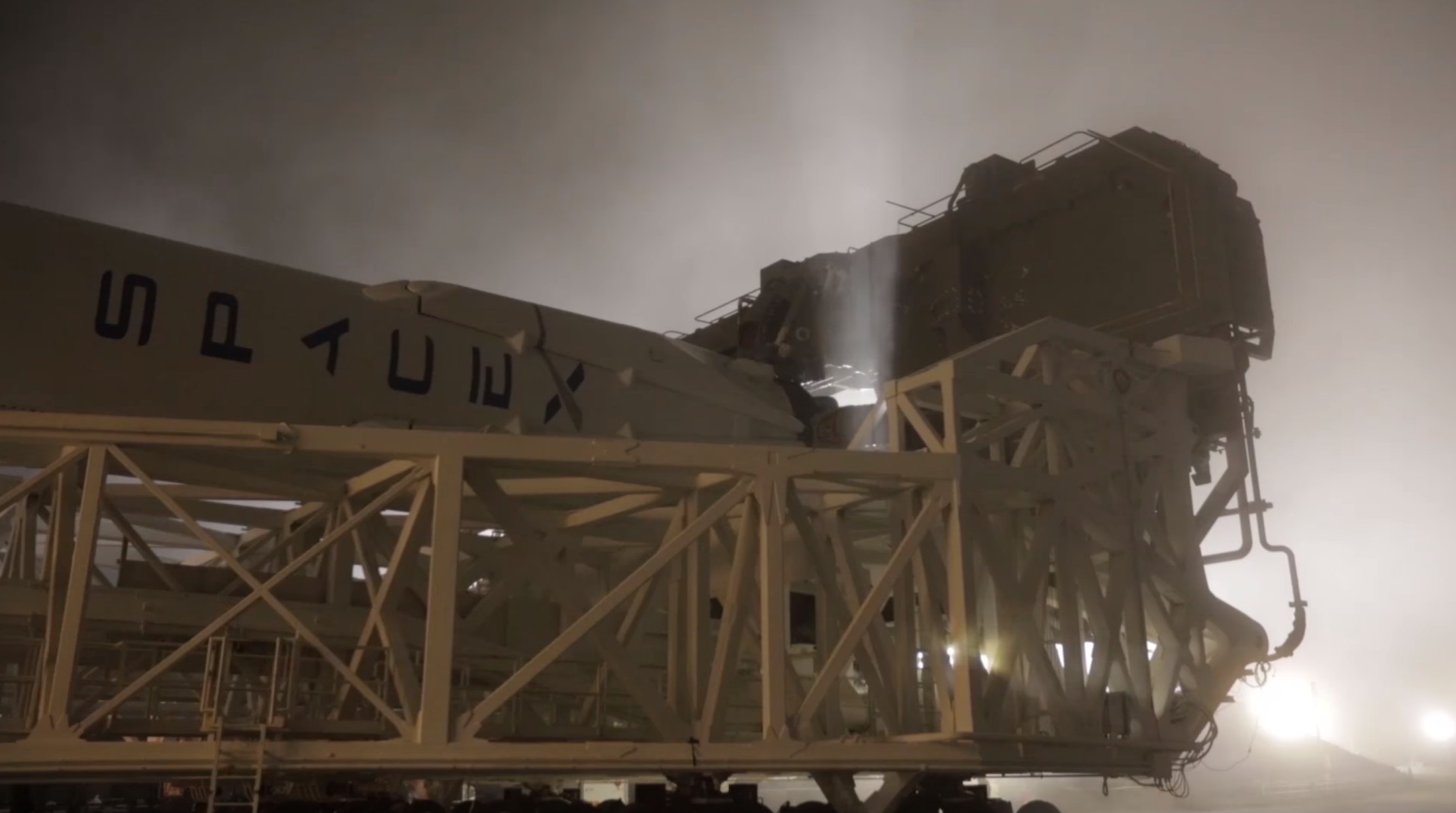
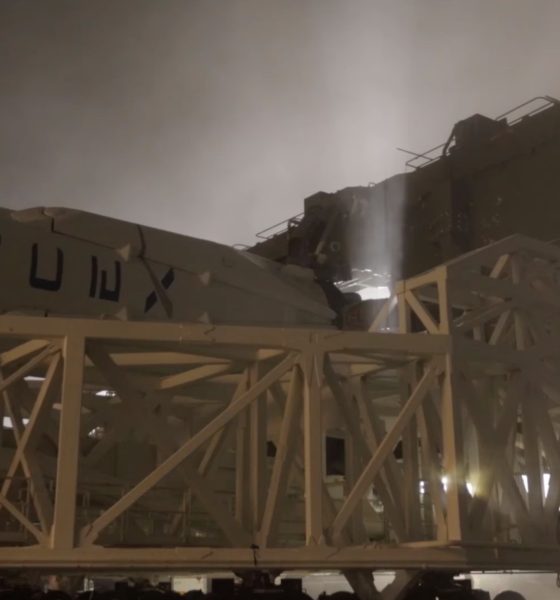
News
(Updated) SpaceX’s next launch is a first step to rival Comcast and Time Warner
Updated February 21: Due to strong upper-level winds, SpaceX has postponed the launch to the same time on Thursday, 6:17 a.m. PST, 9:17 EST. CEO Elon Musk took to Twitter to address the delay, “High altitude wind shear data shows a probable 2% load exceedance. Small, but better to be paranoid.”
Update: SpaceX has delayed the launch of PAZ and its Starlink prototype satellites from Sunday, February 18 to Wednesday the 21st in order to complete additional tests and checks of an upgraded payload fairing. Wednesday’s new instantaneous launch window remains unchanged – 6:17 a.m. PST, 9:17 EST.
Standing down today due to strong upper level winds. Now targeting launch of PAZ for February 22 at 6:17 a.m. PST from Vandenberg Air Force Base.
— SpaceX (@SpaceX) February 21, 2018
Not long after SpaceX’s recent, flawless Falcon Heavy debut, the company has completed a successful static fire of a flight-proven Falcon 9 on the West coast. SpaceX is preparing to send the Spanish government’s PAZ imaging satellite skyward aboard the same rocket that launched Formosat-5 for the Taiwanese government in August 2017.
Amazingly, this means that three of the four launches conducted by SpaceX in the last two months will have made use of reused Falcon 9 boosters, something I am choosing to take as foreshadowing for the coming months. By all appearances, the rocket company has been eminently successful in enacting a true industrial phase change towards the acceptance of flight-proven rocketry – a hard-earned achievement made possible by a combination of incredible reliability and unexpectedly positive responses from government agencies like NASA and the USAF.
- SpaceX is readying one of three flightworthy reused boosters for its final flight, NET June 4. (SpaceX)
- GovSat-1’s sooty booster from late January 2018. (Tom Cross)
- Falcon Heavy’s incredible debut also featured two flight-proven boosters – the side cores were converted from reused Falcon 9s. (Bill Carton)
A relatively light payload, PAZ weighs in just shy of 1400 kg. However, despite a lack of confirmation, it is known that riding along with the imaging satellite are two highly significant prototype satellites, built by SpaceX itself. Deemed Microsat 2A and 2B in FCC licensing applications, the small 400 kg satellites will act as SpaceX’s first-ever flight test of integrated satellite hardware – a massive step towards realizing the company’s dream of Starlink, a global internet constellation meant to provide service of the same caliber (or better…) as providers like Comcast, Time Warner, and others. This will be a major moment if successful, and will make SpaceX the first US company to successfully launch its first prototype internet satellites intended for low Earth orbit (200-1000 miles above Earth), a factor that would make them far more viable as a competitive alternative to ground-based internet than the current heavyweights in geostationary orbit (30,000+ miles above Earth).
Those distances are crucial: such a long distance between user and terminal (60,000+ miles round trip) results in what the average person would consider “lag” or simply unresponsive internet, where actions take as long as several seconds to register (such as clicking a link). This makes things like gaming, video chat, and more effectively unusable. However, thanks to the miniaturization enabled by the relentless progress of electronics technologies, tiny satellites (100-500 kg) with electric propulsion are rapidly becoming a viable alternative and threat to the massive (4000-8000 kg) communications satellites placed into geostationary orbit. Through mass production and lower costs to orbit, a giant network of magnitudes smaller satellites can realistically beat those giant satellites by being closer to the Earth. This means that more satellites in a given network will more frequently reenter the Earth’s atmosphere and be destroyed, requiring the constant launch of reinforcements, but this new paradigm is actually a viable strategy.

A beautiful string of Iridium NEXT satellites deployed into the sunrise. (SpaceX)
SpaceX’s own Microsats, prototypes for a constellation likely to be named Starlink, are quite possibly the most promising entrants among a sea of interested constellation operators. With the addition of laser-based communications links between each or most of the Starlink satellites planned to be placed in orbit, SpaceX’s constellation will be truly unique in its extreme flexibility as a giant, global mesh network.
By using lasers, latency (lag) will be far less significant and will enable SpaceX to distribute its network’s availability beyond the capability of any individual satellite, known as a decentralized network. As always, SpaceX’s choice to pursue such a configuration is extraordinarily ambitious. Still, the very fact that Microsat 2A and 2B are scheduled for launch just days from now suggests that the company’s near-silent satellite development program, employing several hundred people all over the West coast, has seen some considerable successes. In other words, it’s likely not a coincidence that the first flight test of a Starlink satellite will actually feature two satellites – one cannot test laser interlinks with just one satellite.
All things considered, fingers crossed for SpaceX on this flight-proven commercial mission. If all goes well with both PAZ and the Starlink prototypes, SpaceX will be one huge step closer to being able to provide truly universal, affordable, and high-quality internet.
Stay with us on Twitter and Instagram as Teslarati’s West Coast photojournalist, Pauline Acalin, will bring us on the ground coverage at California’s Vandenberg Air Force Base ahead of, and on the day of, the PAZ mission.
Follow along live as we cover these exciting proceedings live on social media!
Teslarati – Instagram – Twitter
Pauline Acalin – Twitter
Eric Ralph – Twitter

News
Tesla Giga Berlin draws “red line” over IG Metall union’s 35-hour week demands
Factory manager André Thierig has drawn a “red line” against reducing Giga Berlin’s workweek to 35 hours, while highlighting that Tesla has actually increased its workers’ salaries more substantially than other carmakers in the country.

Tesla Giga Berlin has found itself in a new labor dispute in Germany, where union IG Metall is pushing for adoption of a collective agreement to boost wages and implement changes, such as a 35-hour workweek.
In a comment, Giga Berlin manager André Thierig drew a “red line” against reducing Giga Berlin’s workweek to 35 hours, while highlighting that Tesla has actually increased its workers’ salaries more substantially than other carmakers in the country.
Tesla factory manager’s “red line”
Tesla Germany is expected to hold a works council election in 2026, which André Thierig considers very important. As per the Giga Berlin plant manager, Giga Berlin’s plant expansion plans might be put on hold if the election favors the union. He also spoke against some of the changes that IG Metall is seeking to implement in the factory, like a 35-hour week, as noted in an rbb24 report.
“The discussion about a 35-hour week is a red line for me. We will not cross it,” Theirig said.
“(The election) will determine whether we can continue our successful path in the future in an independent, flexible, and unbureaucratic manner. Personally, I cannot imagine that the decision-makers in the USA will continue to push ahead with the factory expansion if the election results favor IG Metall.”
Giga Berlin’s wage increase
IG Metall district manager Jan Otto told the German news agency DPA that without a collective agreement, Tesla’s wages remain significantly below levels at other German car factories. He noted the company excuses this by referencing its lowest pay grade, but added: “The two lowest pay grades are not even used in car factories.”
In response, Tesla noted that it has raised the wages of Gigafactory Berlin’s workers more than their German competitors. Thierig noted that with a collective agreement, Giga Berlin’s workers would have seen a 2% wage increase this year. But thanks to Tesla not being unionized, Gigafactory Berlin workers were able to receive a 4% increase, as noted in a CarUp report.
“There was a wage increase of 2% this year in the current collective agreement. Because we are in a different economic situation than the industry as a whole, we were able to double the wages – by 4%. Since production started, this corresponds to a wage increase of more than 25% in less than four years,” Thierig stated.
News
Tesla is seeing a lot of momentum from young Koreans in their 20s-30s: report
From January to November, young buyers purchased over 21,000 Teslas, putting it far ahead of fellow imported rivals like BMW and Mercedes-Benz.

Tesla has captured the hearts of South Korea’s 20s-30s demographic, emerging as the group’s top-selling imported car brand in 2025. From January to November, young buyers purchased over 21,000 Teslas, putting it far ahead of fellow imported rivals like BMW and Mercedes-Benz.
Industry experts cited by The Economist attributed this “Tesla frenzy” to fandom culture, where buyers prioritize the brand over traditional car attributes, similar to snapping up the latest iPhone.
Model Y dominates among young buyers
Data from the Korea Imported Automobile Association showed that Tesla sold 21,757 vehicles to the 20s-30s demographic through November, compared to BMW’s 13,666 and Mercedes-Benz’s 6,983. The Model Y led the list overwhelmingly, with variants like the standard and Long Range models topping purchases for both young men and women.
Young men bought around 16,000 Teslas, mostly Model Y (over 15,000 units), followed by Model 3. Young women followed a similar pattern, favoring Model Y (3,888 units) and Model 3 (1,083 units). The Cybertruck saw minimal sales in this group.
The Model Y’s appeal lies in its family-friendly SUV design, 400-500 km range, quick acceleration, and spacious cargo, which is ideal for commuting and leisure. The Model 3, on the other hand, serves as an accessible entry point with lower pricing, which is valuable considering the country’s EV subsidies.
The Tesla boom
Experts described Tesla’s popularity as “fandom culture,” where young buyers embrace the brand despite criticisms from skeptics. Professor Lee Ho-geun called Tesla a “typical early adopter brand,” comparing purchases to iPhones.
Professor Kim Pil-soo noted that young people view Tesla more as a gadget than a car, and they are likely drawn by marketing, subsidies, and perceived value. They also tend to overlook news of numerous recalls, which are mostly over-the-air software updates, and controversies tied to the company.
Tesla’s position as Korea’s top import for 2025 seems secured. As noted by the publication, Tesla’s December sales figures have not been reported yet, but market analysts have suggested that Tesla has all but secured the top spot among the country’s imported cars this year.
News
Tesla FSD fleet is nearing 7 billion total miles, including 2.5 billion city miles
As can be seen on Tesla’s official FSD webpage, vehicles equipped with the system have now navigated over 6.99 billion miles.

Tesla’s Full Self-Driving (Supervised) fleet is closing in on almost 7 billion total miles driven, as per data posted by the company on its official FSD webpage.
These figures hint at the massive scale of data fueling Tesla’s rapid FSD improvements, which have been quite notable as of late.
FSD mileage milestones
As can be seen on Tesla’s official FSD webpage, vehicles equipped with the system have now navigated over 6.99 billion miles. Tesla owner and avid FSD tester Whole Mars Catalog also shared a screenshot indicating that from the nearly 7 billion miles traveled by the FSD fleet, more than 2.5 billion miles were driven inside cities.
City miles are particularly valuable for complex urban scenarios like unprotected turns, pedestrian interactions, and traffic lights. This is also the difference-maker for FSD, as only complex solutions, such as Waymo’s self-driving taxis, operate similarly on inner-city streets. And even then, incidents such as the San Francisco blackouts have proven challenging for sensor-rich vehicles like Waymos.
Tesla’s data edge
Tesla has a number of advantages in the autonomous vehicle sector, one of which is the size of its fleet and the number of vehicles training FSD on real-world roads. Tesla’s nearly 7 billion FSD miles then allow the company to roll out updates that make its vehicles behave like they are being driven by experienced drivers, even if they are operating on their own.
So notable are Tesla’s improvements to FSD that NVIDIA Director of Robotics Jim Fan, after experiencing FSD v14, noted that the system is the first AI that passes what he described as a “Physical Turing Test.”
“Despite knowing exactly how robot learning works, I still find it magical watching the steering wheel turn by itself. First it feels surreal, next it becomes routine. Then, like the smartphone, taking it away actively hurts. This is how humanity gets rewired and glued to god-like technologies,” Fan wrote in a post on X.
